Few surprises in June ‘Hogs and Pigs’ report
Smaller hog inventory should yield good profits if demand remains strong.
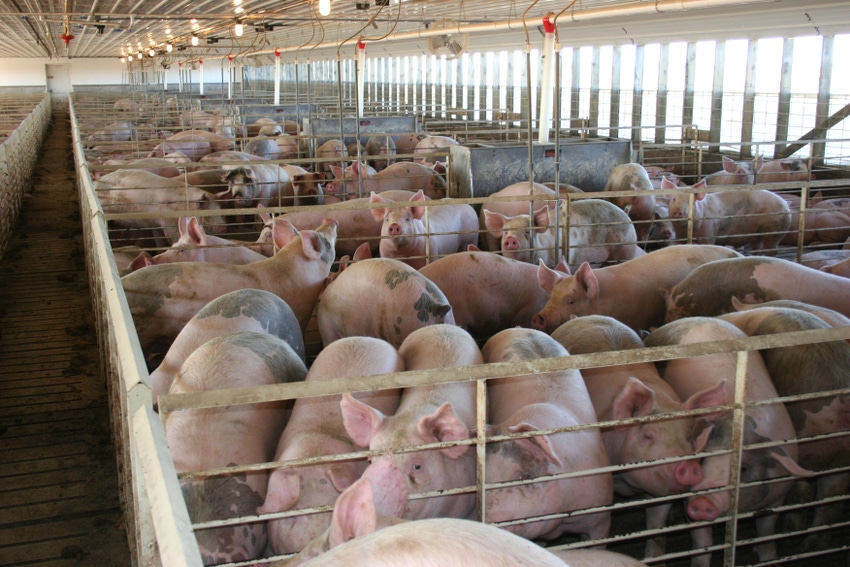
Table 1 shows this year’s June 1 hog inventory as a percent of a year earlier for both the average of pre-release trade forecasts and for the USDA “Hogs and Pigs” survey. The inventory numbers indicate hog slaughter during the second half of 2021 should average below last year’s level.
In general, the USDA numbers were close to the trade forecasts. Both groups think the herd is smaller than a year ago. USDA’s estimate for every inventory group was at least 1% below the year-ago level. Pigs per litter were only down 0.4%. The most bullish USDA number was for summer farrowings, pegged at 4.5% lower than last year.
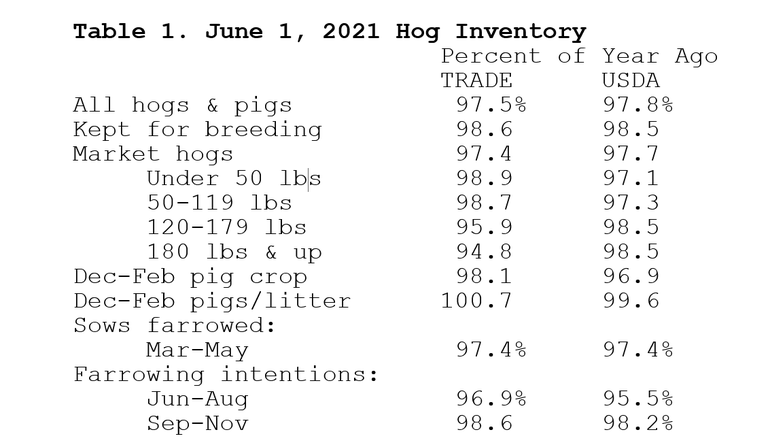
After increasing for six consecutive years, the June hog inventory was 2.2% smaller than last year.
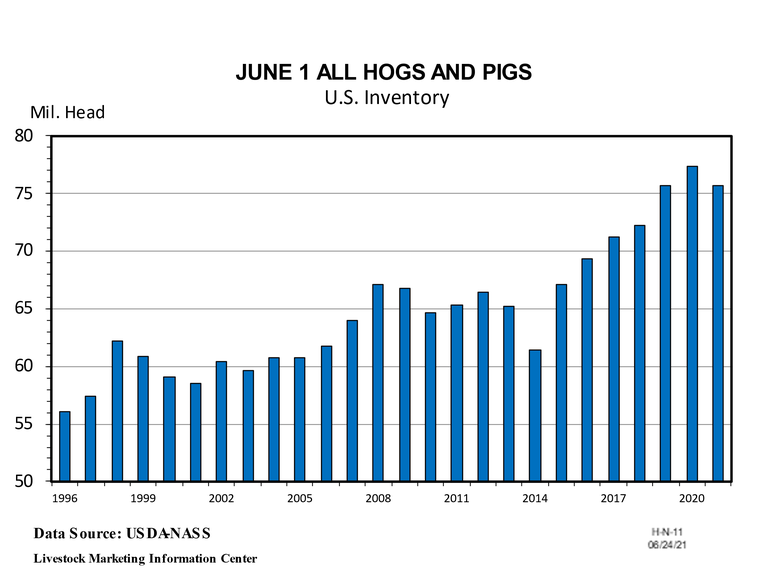
There were a few minor revisions in this latest report. USDA decreased September-November 2020 farrowings by 22,000 litters (0.7%). They followed through and decreased the September-November pig crop by 251,000 head (0.7%), which, in part, led them to lower the December market hog inventory by 300,000 head (0.4%).
USDA increased the March market hog inventory by 140,000 head (0.2%).
In the June report, USDA reduced March-May farrowings to 3.067 million litters which was 3,000 litters fewer than the previous quarter’s farrowing intentions. They decreased the farrowing intentions for June-August to 3.115 million head which is 9,000 below March’s intentions.
COVID-19 illness among packing plant workers sharply restricted hog slaughter during April and May of 2020. This shows up as a dramatic dip on the dotted line in the chart below. After May, hog packers pretty much ran flat out trying to play catch up with the hogs not slaughtered during April and May. As expected, this year hog slaughter was far above the level of April and May 2020. Hog slaughter is also following the five-year average rather than repeating the 2020 pattern. Weekly slaughter is not likely to match the levels of the second half of 2020.
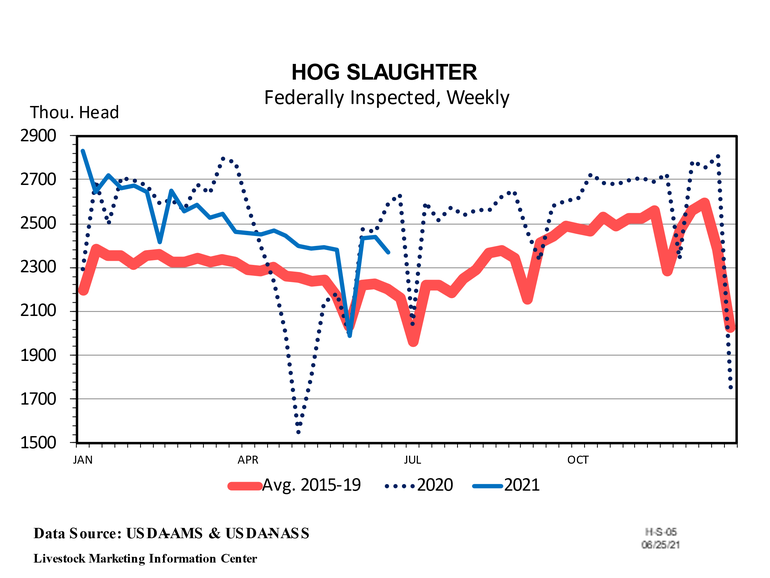
Last summer there was a huge backlog of hogs awaiting slaughter, pushing up weights. Currently there is no backlog. For the last several weeks slaughter weights have been well below last year’s level. Rather than a backlog, weights indicate packers have pulled ahead on slaughter.
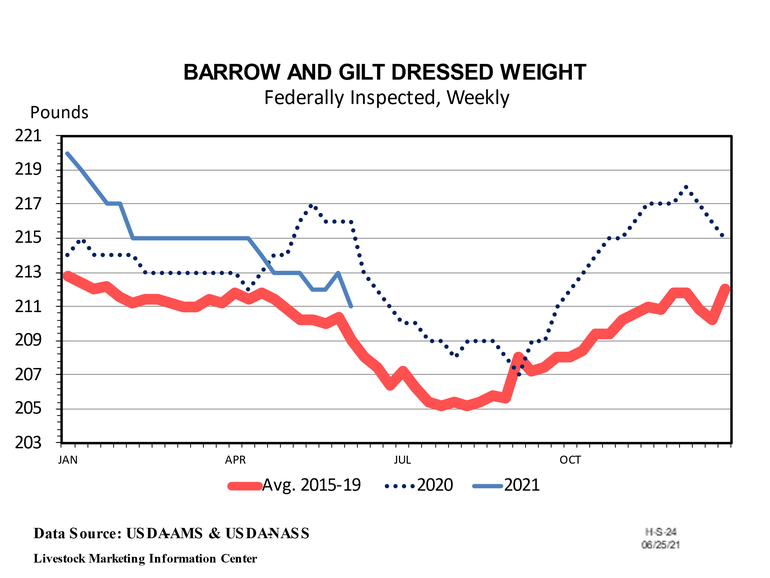
Sow productivity, which has increased steadily for decades, appears to have stabilized.
Pigs per litter during March-May averaged only 10.95 head, the second lowest quarter since December-February 2019. Pigs per litter has held fairly steady at 11 head, more or less, for the last 9 quarters.
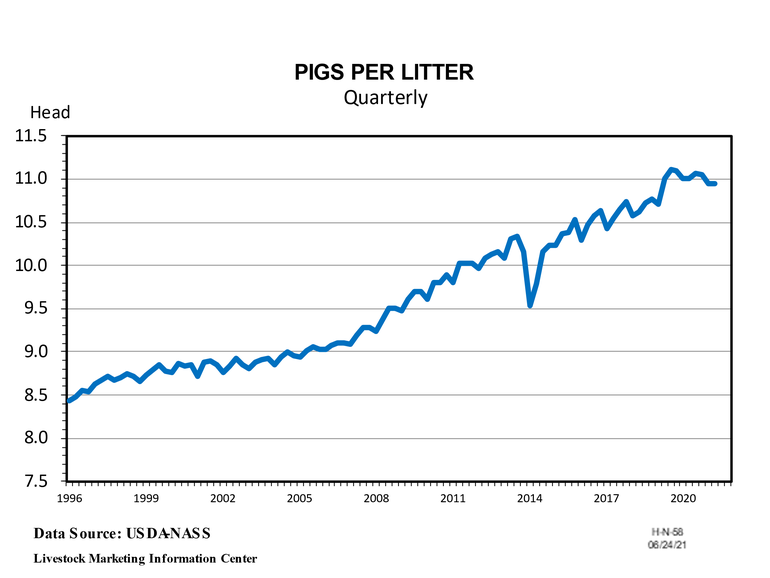
Litters per breeding animal has fluctuated around 2.0 for the last six years. If pigs per sow per year stop increasing, it will be much easier to prevent over production. More sows and heavier slaughter weights will be the only means to more pork.
It seems unlikely to me that sow productivity is at a peak - too many herds are consistently performing well above the national average.
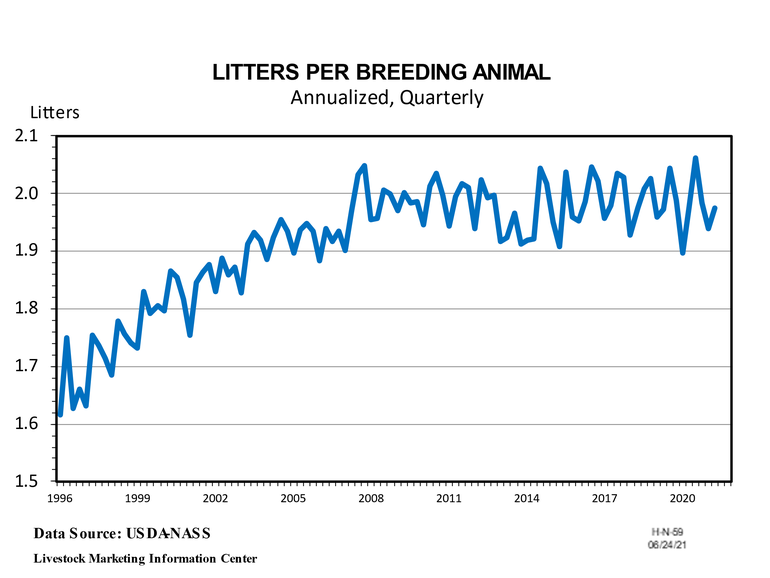
The heavyweight market hog group on June 1 implied that June hog slaughter would be down 1.5% year over year. Preliminary data indicates June hog slaughter was actually down 4.2%. I believe July hog slaughter will also be lower than the market hog inventory implies.
Hog prices have been very close to record levels in recent days. The Iowa-Minnesota negotiated prior day purchased carcass price peaked at $134.41/cwt. on June 18, only 58 cents below the $134.99/cwt. record set on July 14, 2014.
Hog prices have also been amazingly volatile. The Iowa-Minnesota price series started June at $111.63/cwt., peaked at $134.41/cwt. on June 18, and was only $118.21/cwt. last Thursday.Concerns about Chinese purchases of U.S. pork have added to the price volatility.
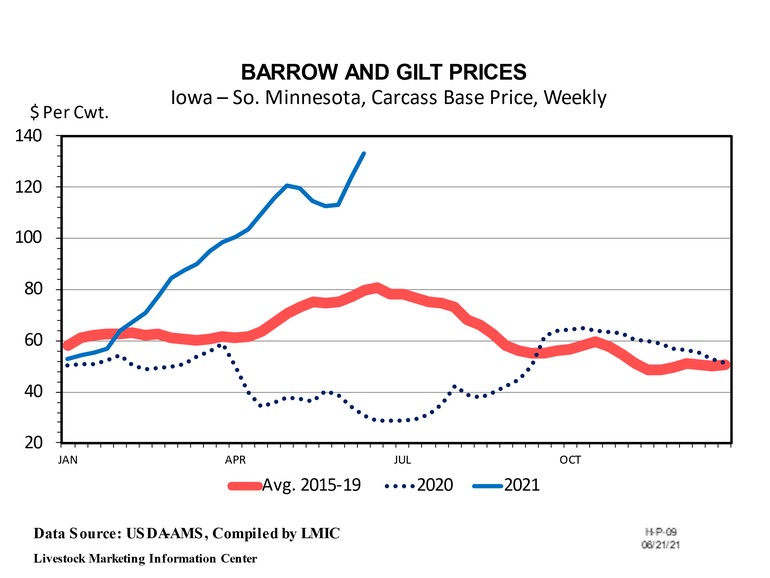
Table 2 shows actual hog slaughter for 2020 and my forecast for 2021 hog slaughter. Commercial hog slaughter in 2020 was a record 131.6 million head. If USDA’s numbers are correct, production trends continue, and hogs are marketed on a timely basis, then 2021 hog slaughter is likely to be roughly 130.8 million hogs, down 0.6% compared to 2020.
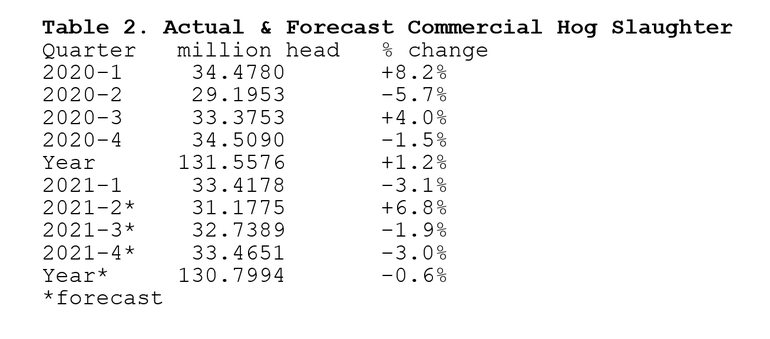
The amount of pork in cold storage is one indicator of pork demand. The amount of pork in cold storage dropped sharply last spring when hog slaughter was curtailed due to COVID among packing plant workers. Despite record pork production in 2020, stocks of frozen pork have remained low. In the last ten years, pork in cold storage at the end of the month was below 500 million pounds 17 times – in December of 2011, 2016, and 2017; November 2014, and each of the last 13 months.
If pork demand remains strong, the smaller hog inventory should yield good profits ahead for producers despite the big jump in feed costs.
Source: Ron Plain, who is solely responsible for the information provided, and wholly owns the information. Informa Business Media and all its subsidiaries are not responsible for any of the content contained in this information asset. The opinions of this writer are not necessarily those of Farm Progress/Informa.
About the Author(s)
You May Also Like





